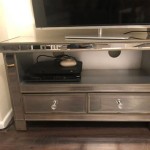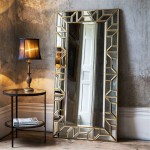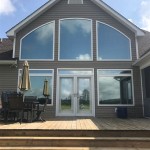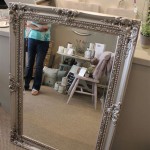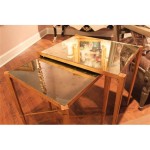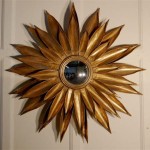Side Mirror Car Location
Side mirrors, also known as wing mirrors or door mirrors, are crucial safety features on any vehicle. Their strategic placement allows drivers to observe traffic and potential hazards around the car, supplementing the limited view provided by the rearview mirror. Understanding the standard location of these mirrors and their adjustments contributes significantly to safe driving practices.
Standard Placement of Side Mirrors
The typical location for side mirrors is on the front doors of a vehicle, just below the window line. This placement provides an optimal balance between driver visibility and minimizing obstruction of the forward view. They are attached in a way that allows for manual or electric adjustment to suit the driver's needs and preferences.
Legal Requirements and Regulations
Regulations regarding side mirrors vary by jurisdiction. Most regions mandate the inclusion of at least two side mirrors, typically one on each side of the vehicle. Regulations often specify the minimum reflective surface area the mirrors must provide to ensure adequate visibility. Some jurisdictions may also stipulate the specific location on the vehicle where the mirrors should be mounted.
The Science Behind Side Mirror Placement
The positioning of side mirrors is not arbitrary. It is based on principles of optics and human visual perception. The goal is to minimize or eliminate blind spots, those areas around the car not directly visible to the driver from either the front or rearview mirrors. Correctly adjusted side mirrors extend the driver's field of view, offering a crucial glimpse of what's happening around the vehicle.
Blind Spot Awareness and Mirror Adjustment
Despite the strategic placement of side mirrors, blind spots can still exist. It is essential for drivers to understand these blind spots and compensate for them by physically turning their heads to check before changing lanes or making other maneuvers. Proper mirror adjustment can significantly reduce blind spots. The Society of Automotive Engineers (SAE) recommends positioning side mirrors slightly outward, minimizing overlap with the rearview mirror's view. This outward adjustment expands the overall field of vision and reduces the area of the blind spot.
Variations in Side Mirror Design and Technology
While the standard location remains consistent, side mirror designs and technology have evolved. Modern vehicles often feature integrated turn signals, heating elements to prevent fogging, and power-adjustable mechanisms. More advanced systems include blind-spot monitoring, which utilizes sensors to detect vehicles in adjacent lanes and alerts the driver with visual or auditory warnings. Some vehicles even offer cameras embedded in the side mirrors to enhance visibility and safety features.
Maintaining and Caring for Side Mirrors
Regular maintenance of side mirrors is crucial for safe driving. Keep the mirror surfaces clean and free from obstructions like dirt or stickers that can impede visibility. Check the mirror adjustments regularly and adjust them as needed to maintain optimal visibility. If a mirror becomes damaged or misaligned, prompt repair or replacement is necessary.
The Future of Side Mirrors
The automotive industry is continually exploring innovative technologies to enhance safety and driver awareness. One area of development is the potential replacement of traditional side mirrors with camera-based systems. These systems utilize cameras to capture images of the vehicle's surroundings, displaying them on screens inside the cabin. While this technology offers potential benefits like improved aerodynamics and reduced blind spots, widespread adoption is currently limited by regulatory hurdles and technological challenges.
Side Mirror Adjustments for Different Vehicle Types
The adjustment process might slightly vary depending on the vehicle type. For instance, larger vehicles like trucks or SUVs might require a wider field of view due to their size and blind spots. Smaller vehicles, such as compact cars, may benefit from a slightly different mirror angle to maximize the view of surrounding traffic. Regardless of vehicle type, adherence to recommended adjustment practices is vital for ensuring optimal visibility and safety.
Impact of Side Mirror Location on Aerodynamics
The location and design of side mirrors also influence a vehicle's aerodynamics. Protruding mirrors create drag, which can negatively impact fuel efficiency. Automotive engineers continually strive to optimize mirror design to minimize drag while maintaining adequate visibility for the driver. This optimization involves careful consideration of the mirror's size, shape, and placement on the vehicle.
The Role of Side Mirrors in Parking and Maneuvering
Besides highway driving, side mirrors play a critical role in parking and maneuvering in tight spaces. They provide a clear view of the vehicle's sides, assisting the driver in judging distances and avoiding collisions with obstacles. Power-adjustable mirrors can be particularly helpful when parking, allowing the driver to adjust the mirrors downwards for a better view of the curb or parking lines.

How To Adjust Your Mirrors Avoid Blind Spots

How To Adjust Your Mirrors Avoid Blind Spots

How To Position Your Car S Mirrors Kare11 Com

Tips For Adjusting Your Rear View And Side Mirrors

This Is How You Adjust And Use Your Mirrors Properly To Have Clear Visibility Driving Academy Tests Org

How To Properly Set Your Side Mirrors

This Is How You Must Adjust Your Car Mirrors Properly News The Financial Express

Drivers Are Just Realizing We Ve All Been Adjusting Our Side View Mirrors Wrong You Need To Use The Green Red Trick Us Sun

Side Mirrors Could Be The Next Vehicle Feature To Disappear Professional Carwashing Detailing

How To Adjust Car Mirrors In Three Steps Carwale

